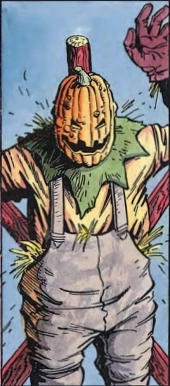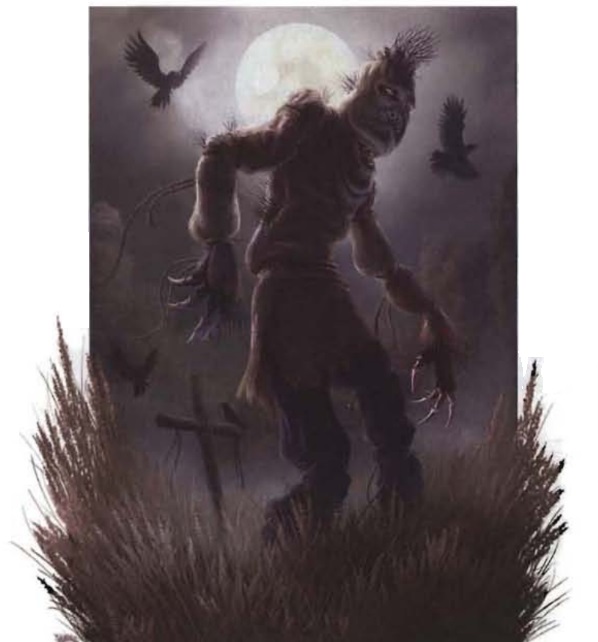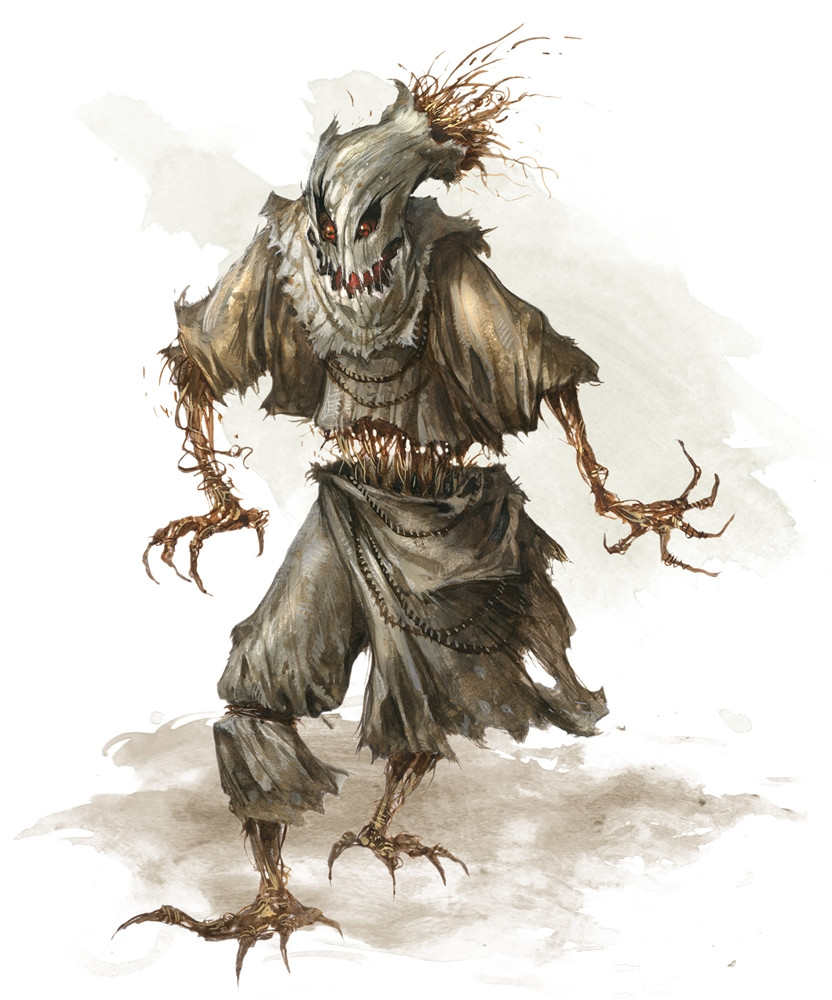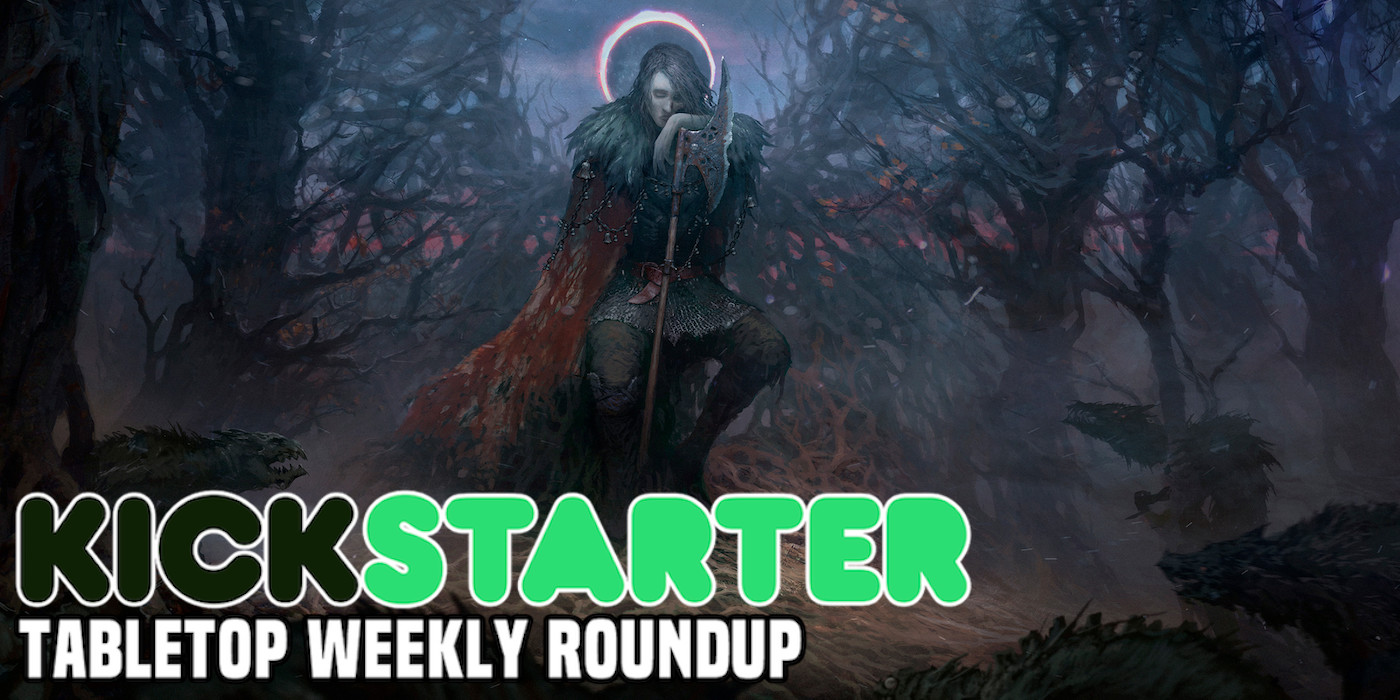D&D Monster Spotlight: The Scarecrow is No ScareBro
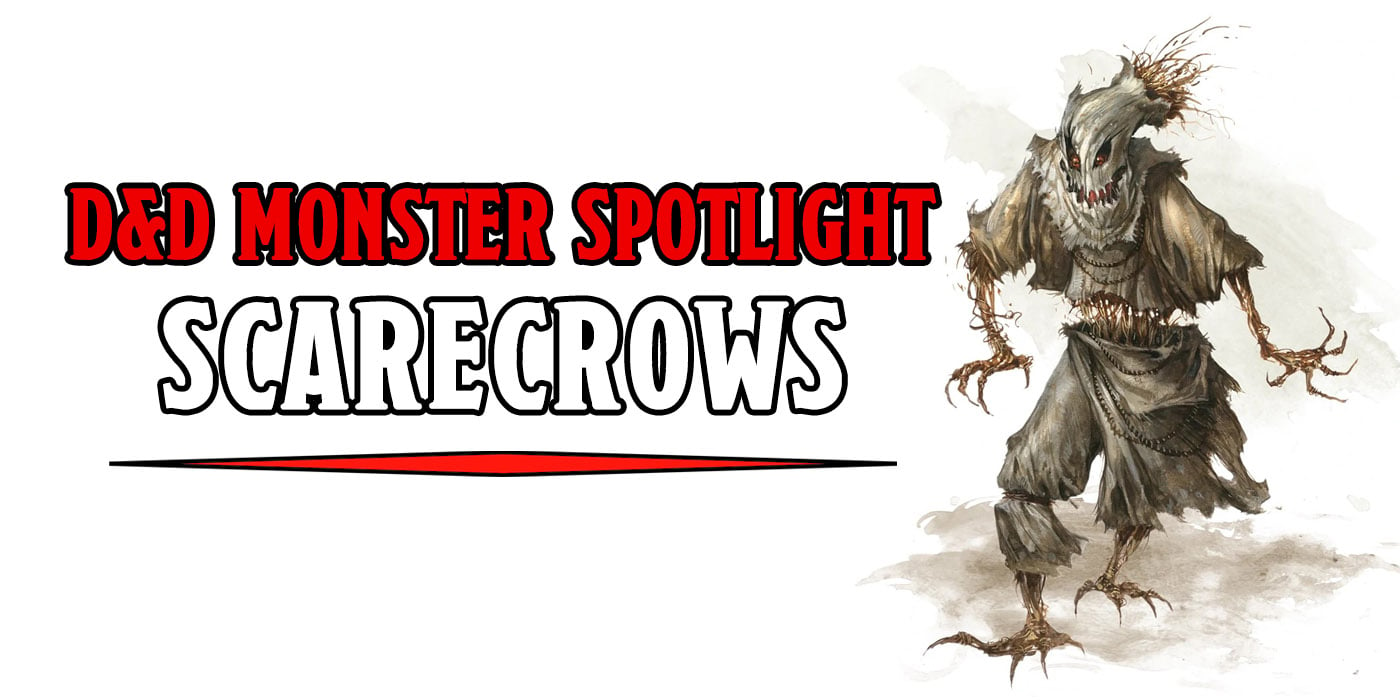
Scarecrows in D&D are a lot like in real life. Except that they may kill you and telepathically tell their creator where to find you.
Loads of Dungeons & Dragons monsters draw inspiration from folklore, legend, or just good old popular media. Many monsters seem like something out of a horror movie, and that’s because they probably are. Fighting those monsters in a controlled setting like a D&D session sounds fun. Encountering them in real life would be terrifying. The Scarecrow is just such a fiend, coming straight from horror movies to terrorize your party. But that’s okay because your table’s players will have a good time.
Second Edition
Scarecrows fall under the category of Golems. Which makes perfect sense, honestly. They’re creatures animated to life from not sentient stuff. I suppose they could have been their own monster type and it would make them a little easier to find in the Monster Manuel. But as we’ve discussed in the past, older editions have some wild Golem sub-types, and Scarecrow fits the bill.
Scarecrows are non-intelligent creatures who only follow the orders of whoever created them. Though they have no critical thinking skills, they will do their best to follow their orders no matter what. Even if it jeopardizes their safety or pseudo-life. They don’t speak but they do cackle when attacking, and their attacks mostly look like straw-filled strikes. What will really get you is the Scarecrow’s gaze. An intelligent creature who meets the Scarecrow’s gaze must pass a saving throw or be transfixed by the Scarecrow and allow it to strike them until the effect ends or the target is killed.
Fourth Edition
By 4E, the Scarecrow is its own monster, no longer falling under the category of Golems. They are similar to real-world Scarecrows in that they mark territory and scare off the unwelcome company. Only our scarecrows are harmless dolls meant to keep unwanted animals away from a farmer’s crops. In the Feywild, Scarecrows serve as a dire warning to any potential trespassers that they could have their entrails ripped out. You say tomato, I say tahmato, right?
4E Scarecrows are also a bit more capable of thought than their 2E cousins. This edition describes them as “smarter and wilier” than Golems and Homunculi. When a Scarecrow spots an enemy, its creator also becomes aware, and when the creature lands an attack, the creator clearly imagines the foe’s appearance and location. These aren’t terribly tough minion creatures with relatively few hit points to their name. But in a campaign, the true danger of the Scarecrow is who set them out to guard and who knows and sees what they know and see.
Fifth Edition
Scarecrows are often the work of Hags and Witches, and they are usually made when demonic spirits are tethered to a vessel. But really, any evil spirit will do just fine to animate a Scarecrow. It retains no memories of its own life and only shambles on to fulfill the orders of its curator. But should that creator die the monster continues on, either following its last command forever or seeking revenge for the death of its creator. They are also very good at standing very very still and pretending to be regular not-possessed Scarecrows. So be careful which farms you trespass on in the Feywild.
Happy Adventuring!

